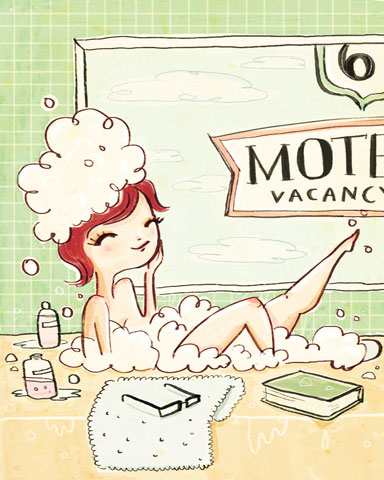 One summer in my early twenties, I dated this i-banker who wore designer shoes, owned a gorgeous two bedroom in Chelsea and drove a red convertible. After a few weeks, he floated the idea of us going on a weekend getaway somewhere – the Hamptons maybe?
One summer in my early twenties, I dated this i-banker who wore designer shoes, owned a gorgeous two bedroom in Chelsea and drove a red convertible. After a few weeks, he floated the idea of us going on a weekend getaway somewhere – the Hamptons maybe?
“You know what would be fun?” I replied, “If we drove ‘til we got tired, pulled over at a Motel 6, ate pizza and read Tolstoy all weekend. Doesn’t have to be Tolstoy. But pizza, for sure.”
He laughed. I hadn’t been kidding. We never did take that weekend trip.
A year or two later, I found myself at an EconoLodge off the interstate eating Dominos in bed and reading The Sound and the Fury alongside a tall, tattooed Southerner with wire-rimmed glasses. Turns out, it was his dream vacation, too. Which is convenient now that he’s my husband and we have two kids, little-to-none disposable income and a desperate need to escape the confines of our apartment.
I’m not saying the motel trips are what they used to be (Tolstoy was the first thing to go) but with a few adjustments, we’ve made the Middle of Nowhere Overnight Getaway into something the whole family can get behind.
Young children are a colossal pain to travel with, but the upside is that they are entertained by the smallest things, and a little change in scenery goes a long way for them. I learned this the summer we went to San Francisco and the highlight of the trip was this worm the kids played with for an hour in Golden Gate Park. Wormy is what they remember from that expensive and exhausting vacation, not the Japanese Tea Garden or the newly-renovated science museum that we were on our way to visit when we stumbled upon the most charming worm in the USA. Every place has a Wormy equivalent, no matter how unexciting it is, so it doesn’t matter where you go.
As long as the hotel in that unexciting place has two-room suites.
By that, I mean accommodations where the bedroom is separated from the living room, and its fold-out sofa, by a door. I have found it’s important to get this specific because the term “suite” is open to various interpretations, like the word “bedroom” and “dining area” in New York real estate. This became clear the time we stayed at a Marriott in Virginia which used the word “suite” to refer to the mini kitchen in the corner of our single, undivided room.
I don’t need a kitchen. In fact, it’s the last thing I need when I’m on vacation. What I need is a heavy divider separating the space where my children sleep from the space where I sleep. Doesn’t have to be a door necessarily – a steel curtain or large boulder would work just as well. It’s not that David and I have any exciting plans in the bedroom, apart from sleep, which I find to be the most exciting thing ever, and which only happens when we disappear after the kids are tucked in. If the kids see us, they torture us. Hell, they torture us anyway, but at least, when we have a separate bedchamber, we can refuel in between grueling runs back to their bedside.
Plus, it is nearly guaranteed that Titanic will be playing on the hotel TV, and though I’m not particularly fond of the flick, it is precisely what I want to view in the Middle of Nowhere in a borrowed bed. And listening to the gasps and shrieks which indicate my kids are being permanently scarred detracts from my enjoyment..
Two-room suites are the solution to all our travel problems. So imagine my delight when a Mommy friend mentioned that she’d recently stayed with her kids at a business hotel in the Middle of Nowhere, New Jersey, which had an indoor swimming pool and great weekend rates.
“Does it have suites?” I asked her, my heart skipping a beat, “A bedroom separated from the living room with a door?”
“Yeah,” she said, “and they’re about $100 a night.”
A few weeks later, David and I strapped our six year-old, affectionately known as Primo and our four year-old, Seconda, into the backseat, and were off to the Middle of Nowhere, New Jersey to embark on the following itinerary:
• 2-2:30pm: Take inventory of free stuff
“They gave us shampoo! To keep forever!” shouts Seconda from the bathroom, “SO MUCH SHAMPOO!!!”
“Mommy, come quick – there’s a coffee maker” yells Primo, “And they give you your own coffee! And sugar! And SPLENDA! Did you ever try it? It must be SPLENDID!”
The enthusiasm is contagious. “There are tea bags too,” I exclaim. “Herbal tea bags, so you can drink them! We can have a TEA PARTY!”
Once we discover everything we’ve been gifted in the room, I call the front desk to see if there is more stuff they can give us for free. I don’t even need anything; I just want to continue the high. Getting extra shampoo bottles and sewing kits is my closest approximation of what it feels like to roll around on a huge pile of cash, like people do in the movies.
“Do you have a DVD player you can send to the room?” I ask.
“No.”
“What about free wireless?”
“No.”
“Do you have a hairbrush? Or toothpaste?”
“No.”
“Can we have a few extra blankets?”
“We’ll bring them right up.” I hang up and tell David, “OK, we’ve got everything. Let’s hit the pool.”
• 2:30-4:30pm: “Swim”
Nothing says vacation like not having to bring your own towels to the pool. We spend a good two hours splashing around: Seconda inciting widespread panic as she cannon-balls herself into the deep end without warning, and Primo training for the Olympics in water treading.
“I think you’ve got this covered,” I assure David before dropping myself into the hot tub.
• 4:30-5pm: Explore hiding places
It is a little-known fact that hotel rooms are ideal sites for Hide and Seek, what with all the empty wardrobes, empty under-the-sink cabinets, and empty spaces under beds, coffee tables and armchairs. The kids can never play Hide and Seek in our place because every square inch is crammed full of crap and the trouble it takes to carve out a space for their little bodies just isn’t worth it.
• 5- 5:03pm: Check for bedbugs
“We should inspect the bed,” I tell David, “For bedbugs.”
“Ok,” he says, “how?”
“Weeeell,” I ponder, “you just pull off the sheets . . . “
He does so. “And look for smears of blood. Human blood. And bugs. Or bug feces.”
“I don’t see any bugs, bug feces or blood, human or otherwise.”
“Although I think, to be effective, we need a black light?”
“Great. I’ll just run back to the car and get ours, the one we borrow from the FBI,” David says, “Can we be done now?”
• 5:03-6pm: Wreak havoc in the lobby
I can’t in good conscience feed the kids Dominoes. Big Anthony’s Pizza, however, will do quite nicely. The children get their kicks by experimenting with the half-dozen seating options in the lobby – leather couch, velvet couch, armchair, bench, coffee table, plant stand – while I turn a blind eye in order to pore over the pizza menu. For once, we have all the time in the world to fully weigh all pizza options – is today the day we try mushrooms? Finally say “yes” to anchovies? When I notice Seconda pulling the leaves off a plant and hiding the evidence in her leggings, I decide to beat a hasty retreat and wait for Big Anthony’s in our room.
• 6-6:30pm: Ice, ice, baby
I don’t know why hotels don’t highlight the unlimited access they provide to ice machines as a major amenity (All you can chew ice chips! Ice machine guaranteed on every floor!). My kids find this the single-most exciting aspect of a hotel stay, and I, too, can not help but thrill at the gratifying sound of an ice machine surrendering its bounty to my empty bucket. A girl could keep champagne chilled all night long! Could keep a twisted ankle from getting swollen! Could enable a little boy’s ice-crunching habit! The possibilities are endless.
• 6:30-8pm: Suck it, crappy hotel TV
Hotel television offers a great many delights, but not to the under-18 crowd. Of course, we don’t go to the Middle of Nowhere to watch TV! We go to watch Youtube, on my Iphone. Clips from The Little Mermaid sequel, Thunder Cats episodes, Charlie Bit My Finger – sure, why not? Eat a bucket of ice chips while you’re at it. there’s plenty.
• 8pm: Bedtime
One bath, several chapters of Harry Potter and countless screams of “SHE’S PUSHING/ KICKING/ PUNCHING ME!” and “I”LL STAB YOU IN THE HEART YOU EVIL BROTHER!” later, the children are asleep, though not in the same room. When they really won’t stop threatening each other with bodily harm, we discover a third bedroom in the suite – the antechamber to the bathroom which has doors leading to the living room, bathroom and the bedroom. There is a very cozy patch of carpet under the sink with Seconda’s name on it, and plenty of blankets to pad it with. David and I watch Leonardo Di Caprio go down with the ship, again. Bliss.
Three bedrooms, one swimming pool and unlimited ice chips, for $100 bucks a pop. Who needs the Hamptons?
A week later, back in the Big Apple, I surveyed my empty fridge, full sink and pair of children throwing Legos at each other, and gave David a pathetic look which clearly said “Calgon, take me away.”
“Its OK,” he said, “We’ll always have South Jersey.”
For more of Nicole’s adventures in the Middle of Nowhere and beyond, visit her blog, A Mom Amok at amomamok.blogspot.com.

 This summer is poised to be an exciting time for food lovers in Brooklyn, but does that really surprise you? Whether you want to eat, drink, or shop, here’s what the innovators of the industry are up to around the borough.
This summer is poised to be an exciting time for food lovers in Brooklyn, but does that really surprise you? Whether you want to eat, drink, or shop, here’s what the innovators of the industry are up to around the borough.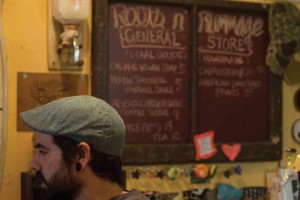
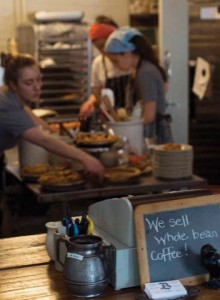
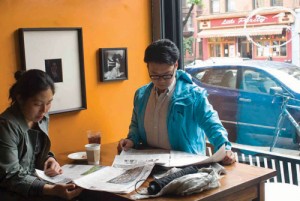
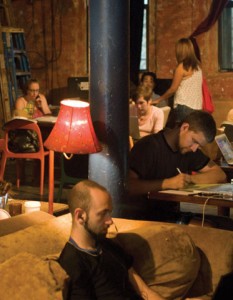
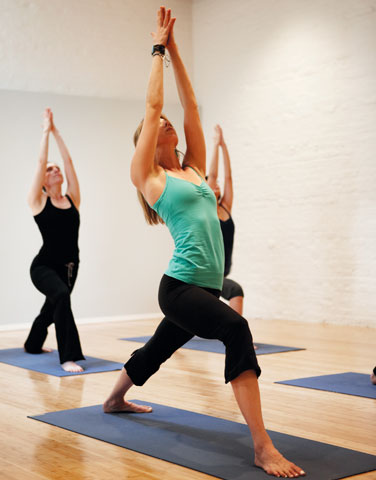

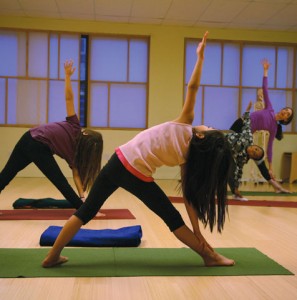




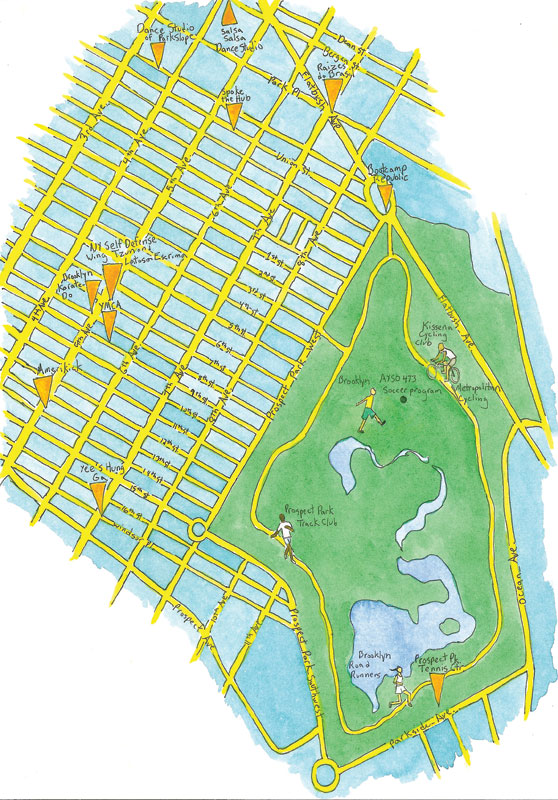 uide to getting fit in Park Slope
uide to getting fit in Park Slope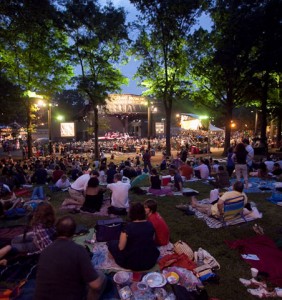 A LITTLE NIGHT MUSIC
A LITTLE NIGHT MUSIC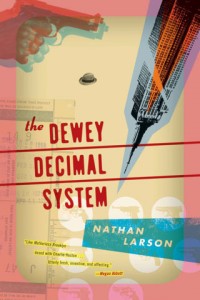 SOMETHING FOR YOUR SUMMER READING LIST
SOMETHING FOR YOUR SUMMER READING LIST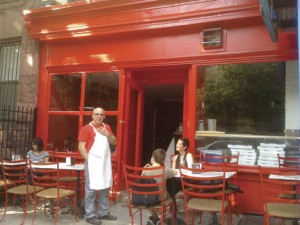 A SIMPLE SLICE OF HEAVEN
A SIMPLE SLICE OF HEAVEN COOK LIKE A MASTER
COOK LIKE A MASTER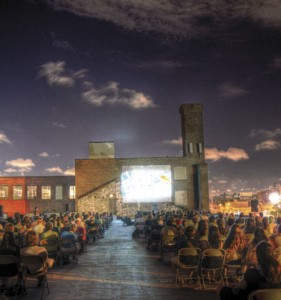 THE URBAN DRIVE-IN
THE URBAN DRIVE-IN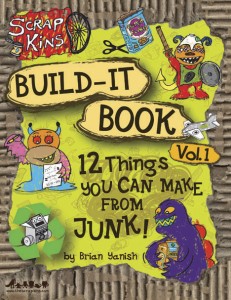 PROJECTS FOR A RAINY DAY
PROJECTS FOR A RAINY DAY SUPPORT YOUR LOCAL TEAM
SUPPORT YOUR LOCAL TEAM Tom said, “Listen to this. Due to extensive cuts in the quarter’s revised operational budget, Franklin City Council has called for an immediate restriction of municipal power usage between 10 p.m. and 4 a.m. Mayor Barclay encourages Franklin residents to make use of their porch and garage lights if they need to be outdoors at night.”
Tom said, “Listen to this. Due to extensive cuts in the quarter’s revised operational budget, Franklin City Council has called for an immediate restriction of municipal power usage between 10 p.m. and 4 a.m. Mayor Barclay encourages Franklin residents to make use of their porch and garage lights if they need to be outdoors at night.”
 It’s spring. It’s time for my yearly column about renewal or rebirth. Time for my impassioned demand that we all support our farmers and attempt to grow something in our window boxes and tree pits. Time for my plea for more political action around clean air and water issues. For some reason, I just can’t bring myself to do it this year. That winter we just endured left me bitter and uninspired. Fortunately for us, I’ve been neglecting my mail so I have my pick of the letter litter for this issue’s column. Do all the stuff that I should be telling you to do. There’s no better time than the spring to get off your tush and make your street/neighborhood/world a better place.
It’s spring. It’s time for my yearly column about renewal or rebirth. Time for my impassioned demand that we all support our farmers and attempt to grow something in our window boxes and tree pits. Time for my plea for more political action around clean air and water issues. For some reason, I just can’t bring myself to do it this year. That winter we just endured left me bitter and uninspired. Fortunately for us, I’ve been neglecting my mail so I have my pick of the letter litter for this issue’s column. Do all the stuff that I should be telling you to do. There’s no better time than the spring to get off your tush and make your street/neighborhood/world a better place.